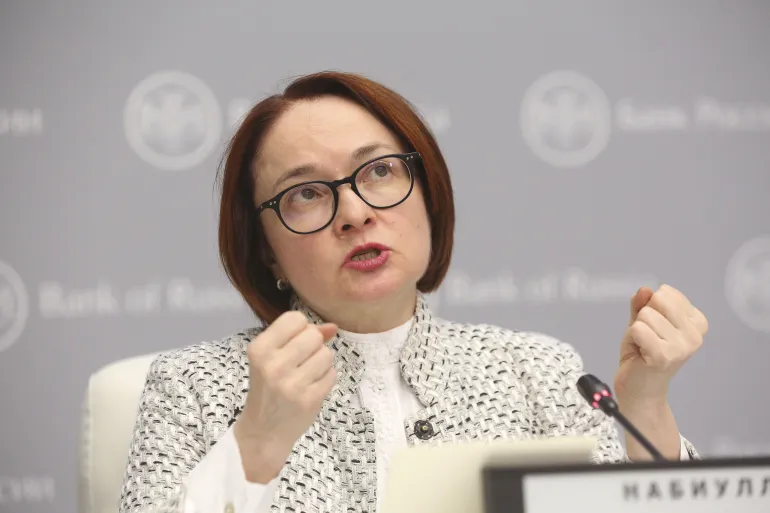Russia’s central bank on Friday implemented its steepest interest rate cut in over three years, lowering it from 20 per cent to 18 per cent, in a move to avert a recession.
This decision comes as the country’s economy, marked by volatility since the February 2022 military action in Ukraine, shows signs of slowing.
Economic Volatility and Rate Adjustments
After raising interest rates to a high of 21 per cent last October to combat inflation, the central bank had only recently eased them to 20 per cent.
However, these elevated lending rates have put significant pressure on businesses, leading to calls from corporate leaders for a reduction.
Economists now suggest that Russia’s economic growth, largely propelled by substantial spending on the Ukraine conflict, may be decelerating.
The country recorded its slowest quarterly expansion in two years during the first quarter of 2025. The central bank noted in a press release that “Current inflationary pressures… are declining faster than previously forecast. Domestic demand growth is slowing.”
Despite initial expectations that sanctions would trigger a deep recession, Russia has defied these predictions.
Growth in 2023 and 2024 was boosted by increased spending on weapons manufacturing, substantial payments to soldiers, and generous social welfare increases.
However, officials are now concerned that military spending alone may not be sufficient to sustain growth or reflect genuine productivity gains.
Budget Deficit and Oil Revenue Challenges
The central bank maintained its GDP growth forecasts at 1-2 per cent for this year and 0.5-1.5 per cent for 2026, a decrease from last year’s four per cent growth.

Any slowdown in growth is likely to exacerbate Russia’s budget deficit, which soared to $46 billion (1.7 per cent of GDP) in the first half of 2025, nearly 300 per cent higher than the previous year.
Russian lawmakers have advocated for strict budget controls and austerity measures from next year, as declining oil revenues and escalating military expenditure deplete public funds.
Fossil fuel revenues for Russia dropped almost a fifth between January and June, impacted by falling oil prices due to various factors, including Trump’s tariffs, sanctions, and increased global output.
The central bank has also adjusted its forecast for Urals crude oil prices from $60 to $55 per barrel for both this year and next.
Central Bank Governor Elvira Nabiullina stated that the country’s “budget rule,” which involves selling foreign currency from its rainy day fund to cover oil and gas revenue shortfalls, would “smooth out” any drop in oil prices.
However, the fund’s liquid assets stood at just $52 billion as of July 1, nearly half of the more than $100 billion available shortly before the Ukraine conflict.
Economists from Russia’s Presidential Academy of National Economy have warned that if lower oil prices persist, the fund might only be sufficient to offset budget shortcomings for a single year.
Nabiullina acknowledged that the sustainability of the budget rule in changing external conditions is “a matter for discussion.”


 Trending
Trending 